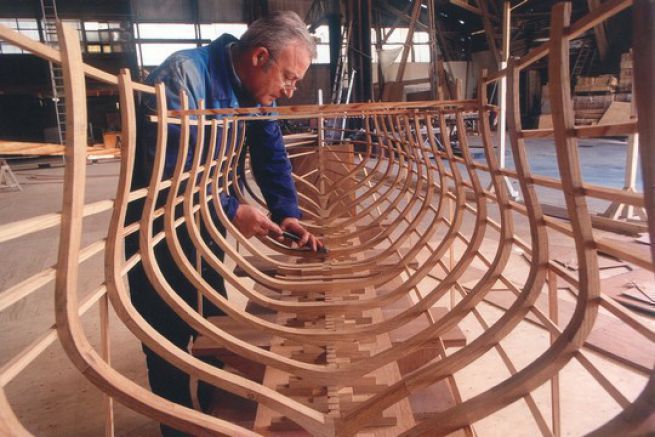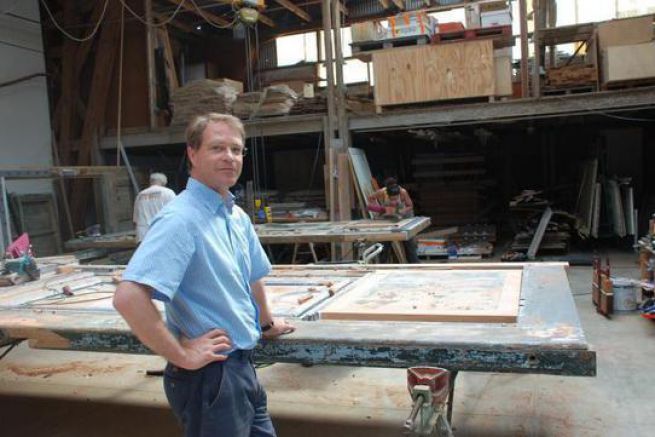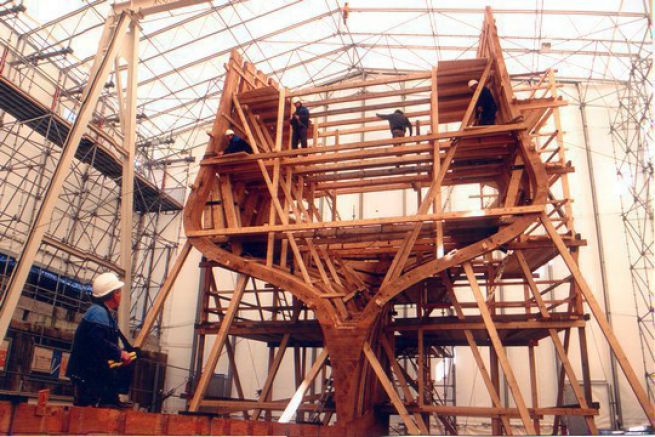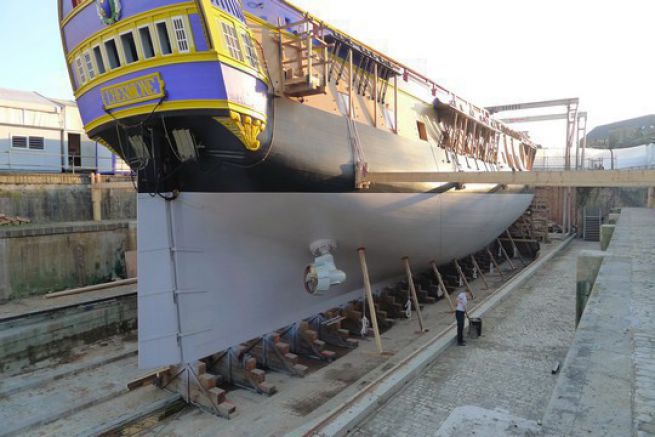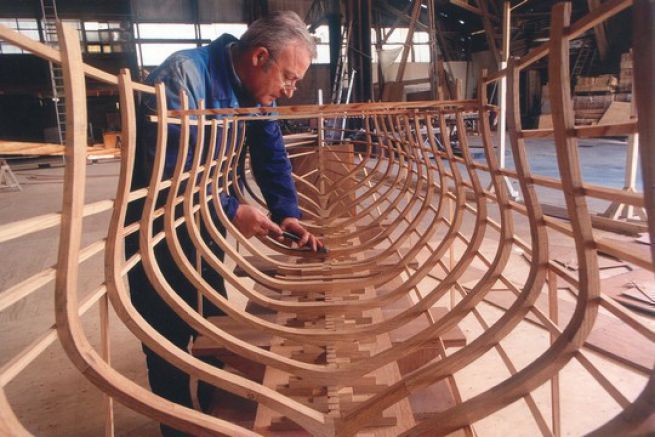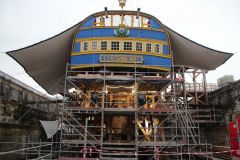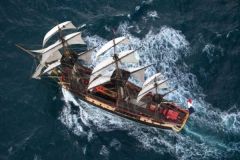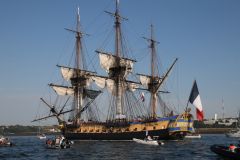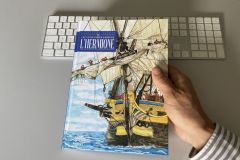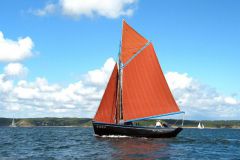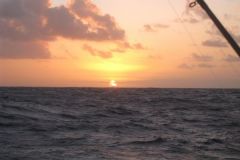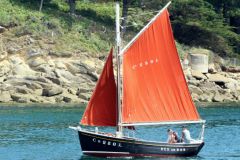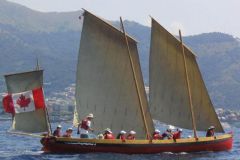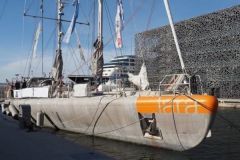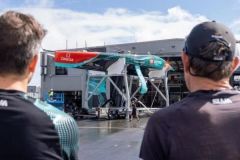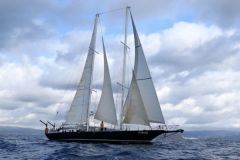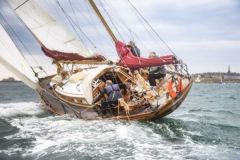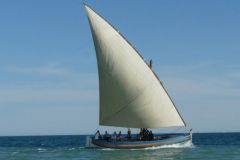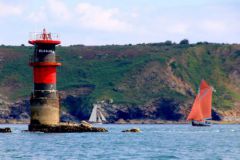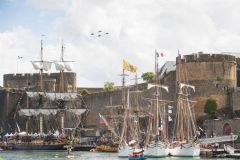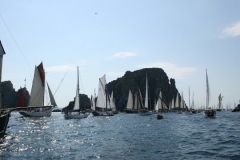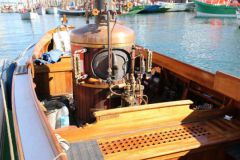It is in the Arsenal of Rochefort, on the banks of the Charente, that the company Asselin has reconstructs the Hermione as the original had been in the same place and place in 1778. " We were there before there were even pieces of wood. We built the whole hull, the whole mast and a lot of things inside." explains François Asselin. Asselin has a 17-year history with Hermione, until the Frégate was launched at the beginning of September. " We've been there since 1997, since 1996 in studies and until the day before the launch without interruption." .

Reconstitute plans for successful copying
"The philosophy of the project was to make the reconstruction as archaeological as possible. We started from the historical documents we had in our possession. In the archives of the French Navy, we discovered a table of figures by Chevillard Aîné, the master builder of the Hermione. This table was a sort of parts list with all dimensions, in feet, inches and line. It is thanks to this period document that we were able to draw the layout on the ground at scale 1, the sketch, and the entire structure of the Hermione. It was the key document that got us started. The Hermione was part of a group of 4 frigates, which were built on the same plan. There was the Concord, the Fairy, the Courageous and then the Hermione. The research then focused on these archives. Fortunately, if we can say so, the Concorde had been captured on 18 e in the Caribbean Sea by the British. At the time, the English, our enemies, were surveying captured ships for industrial espionage. Our boats were faster and they were trying to understand what our trade secrets were. We then went to the Royal Navy archives in Greenwich, and we recovered copies of the documents. As a result, from the tables of French figures, and the plans of the sistership, we were able to cross the data to be the closest to a historical reconstitution."
"In parallel, many other documents such as encyclopaedias have been found. We also went to England, to a historic arsenal, to Portsmouth, but also to Boston. There was a lot of work done upstream with a historical committee, which had been formed, to ensure that this project was really a reconstruction as identical as possible in the beginning
